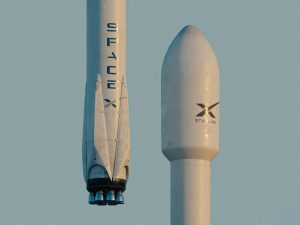
LEO satellites are transforming the way we communicate and access information, and WordPress is at the forefront of this revolution. The focus keyword for this article is LEO satellites, and we will explore the various aspects of this technology and its impact on global connectivity. LEO satellites, or Low Earth Orbit satellites, are a type of satellite that orbits the Earth at an altitude of approximately 160 to 2,000 kilometers. This proximity to the Earth’s surface allows for faster data transfer rates and lower latency compared to traditional geostationary satellites.
The use of LEO satellites is becoming increasingly popular, with many companies and organizations launching their own constellations of satellites to provide global connectivity. One of the main advantages of LEO satellites is their ability to provide high-speed internet access to remote and underserved areas, where traditional infrastructure may not be available. This has the potential to bridge the digital divide and provide equal access to information and opportunities for people around the world.
WordPress, as a leading content management system, is playing a crucial role in the development and deployment of LEO satellite technology. Many companies and organizations are using WordPress to create and manage their online presence, and the platform’s flexibility and customizability make it an ideal choice for the complex and dynamic nature of LEO satellite technology. From managing satellite data and analytics to creating user-friendly interfaces for customers, WordPress is helping to drive the growth and adoption of LEO satellites.
How LEO Satellites Work
LEO satellites work by orbiting the Earth at a low altitude, which allows them to communicate with Earth-based stations and other satellites more efficiently. They use a variety of frequencies, including Ka-band, Ku-band, and L-band, to transmit and receive data. The satellites are typically launched into orbit using rockets, and once in orbit, they use their onboard propulsion systems to maintain their position and altitude.
One of the key benefits of LEO satellites is their ability to provide global coverage, even in areas where traditional infrastructure may not be available. This makes them ideal for applications such as disaster response, remote sensing, and navigation. Additionally, LEO satellites can be used to provide backup connectivity in case of outages or disruptions to traditional networks.
Applications of LEO Satellites
LEO satellites have a wide range of applications, from providing high-speed internet access to remote and underserved areas to supporting critical infrastructure such as emergency response and navigation. They can also be used for remote sensing, weather forecasting, and Earth observation, among other things. The use of LEO satellites is becoming increasingly popular in industries such as aviation, maritime, and agriculture, where reliable and high-speed connectivity is critical.
In addition to their practical applications, LEO satellites also have the potential to drive economic growth and development. By providing access to information and opportunities, LEO satellites can help to bridge the digital divide and promote economic development in underserved areas. They can also support the growth of new industries and job creation, particularly in the technology and telecommunications sectors.
Challenges and Limitations of LEO Satellites
While LEO satellites offer many benefits, there are also several challenges and limitations to their use. One of the main challenges is the high cost of launching and maintaining a constellation of satellites. Additionally, LEO satellites have a relatively short lifespan, typically ranging from 5 to 10 years, which means that they need to be replaced regularly. There are also concerns about the environmental impact of LEO satellites, particularly in terms of space debris and the potential for collisions with other satellites or objects in orbit.
Despite these challenges, the use of LEO satellites is becoming increasingly popular, and many companies and organizations are investing in the development and deployment of this technology. As the demand for global connectivity continues to grow, it is likely that LEO satellites will play an increasingly important role in meeting this demand and providing access to information and opportunities for people around the world.
In conclusion, LEO satellites are revolutionizing the way we communicate and access information, and WordPress is at the forefront of this revolution. With their ability to provide high-speed internet access to remote and underserved areas, LEO satellites have the potential to bridge the digital divide and promote economic development. While there are challenges and limitations to their use, the benefits of LEO satellites make them an exciting and important area of development in the field of satellite technology.





